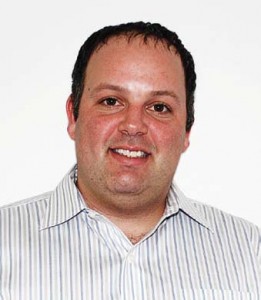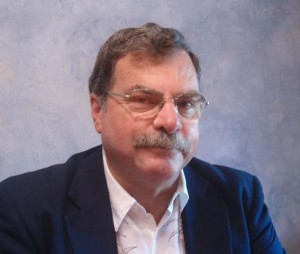Executive Roundtable on the Satcom on the Move Market
by B.H. Schneiderman
Los Angeles, Calif., July 16, 2012--To shed light on the trends in the satcom on the move market, Satellite Executive Briefing invited several key executives from some of the leading companies in the field. We asked to share their views in a roundtable discussion on this important market. Participating in the roundtable discussion are Keith Buckley, President and CEO of ASC Signal, Drew Klein, Director – International Business Development, C-COM Satellite Systems, Tim Shroyer, Chief Technology Officer, General DynamicsSATCOM Technologies and Dwight Hunsicker, Vice President Government Solutions, Globecomm Systems. Follows are excerpts of the exchange:
Satellite Markets (SM) :How do you see the market for your mobile satellite antenna product lines in the next few years?
 Keith Buckley, ASC Signal: Most of our mobile products, like our 2.4m Nomadic and our line of trailered Trifolds (3.7m – 4.6m), are in high demand, and we expect the demand to continue. Since we focus on all frequency bands, multi-band feeds and low-PIM applications for all of our mobile products, our customers continuously find new applications for using these antennas. We have also developed many Commercial Off-the-Shelf (COTS) products, so defense departments in various countries have come to us for support with quick deployment and on programs with quick turnaround
Keith Buckley, ASC Signal: Most of our mobile products, like our 2.4m Nomadic and our line of trailered Trifolds (3.7m – 4.6m), are in high demand, and we expect the demand to continue. Since we focus on all frequency bands, multi-band feeds and low-PIM applications for all of our mobile products, our customers continuously find new applications for using these antennas. We have also developed many Commercial Off-the-Shelf (COTS) products, so defense departments in various countries have come to us for support with quick deployment and on programs with quick turnaround
 Drew Klein, C-COM: The market is expected to grow not just for the next 1-5 years, but according to some analysts, the mobile VSAT units in service is likely to experience significant growth for the next decade. NSR projects more than a doubling of in-field mobile units, from land to sea to air. All mobile applications and all verticals (Oil & Gas, SNG, Emergency Communications, Disaster Recovery, Government, Military, Telecom) are candidates for strong increases in the future, with the potential to see explosive, exponential growth depending on the circumstances, be they manmade or natural.
Drew Klein, C-COM: The market is expected to grow not just for the next 1-5 years, but according to some analysts, the mobile VSAT units in service is likely to experience significant growth for the next decade. NSR projects more than a doubling of in-field mobile units, from land to sea to air. All mobile applications and all verticals (Oil & Gas, SNG, Emergency Communications, Disaster Recovery, Government, Military, Telecom) are candidates for strong increases in the future, with the potential to see explosive, exponential growth depending on the circumstances, be they manmade or natural.
 Tim Shroyer, GD Satcom: Technologies has seen a steady increase in the demand for satellite communications terminals supporting those types of applications over the last few years and we expect demand to continue to increase because we are developing products that meet highly refined user requirements generated by evolving satellite standards.
Tim Shroyer, GD Satcom: Technologies has seen a steady increase in the demand for satellite communications terminals supporting those types of applications over the last few years and we expect demand to continue to increase because we are developing products that meet highly refined user requirements generated by evolving satellite standards.
We consider those applications to fall into two separate market segments that we define as "Transportable" and "Satcom-On-the-Move." The transportable market segment includes a number of variants of terminal requirements for satellite communications that are satisfied by terminals that are able to be quickly and easily transported to user locations where they can establish communications links. In the commercial communications world, these terminals are used for applications like news gathering, oil exploration communications and disaster recovery. In the military/government communications world, these terminals are used for ‘reach back,’ tactical in-theater communications and logistics support.
With new, higher capacity, Ka-band spot beam satellites now being deployed in most world regions we have seen an increase in demand for transportable and mobile Ka-Band terminals which we expect to accelerate.
 Dwight Hunsicker, Globecomm: Although there have been few major “program-of-record” type DoD procurements within the past year or so for transportable/flyaway SATCOM terminal equipment, we continue to see sporadic requirements for terminals that transmit / receive data rates in the 1-4 Mbps realm which is well beyond what is available through Mobile Satellite Systems (MSS) solutions. The trend for auto-acquiring systems, especially at Ku-Band, remains strong given ease of set-up and operation. The full deployment of the WGS constellation has spurred requirements for X- and military Ka-Band as well. The DoD and broader US Federal budget contraction will create two market demands, one being sustainment and upgrade of existing systems and the second being to make do with less in terms of quantities and capabilities.
Dwight Hunsicker, Globecomm: Although there have been few major “program-of-record” type DoD procurements within the past year or so for transportable/flyaway SATCOM terminal equipment, we continue to see sporadic requirements for terminals that transmit / receive data rates in the 1-4 Mbps realm which is well beyond what is available through Mobile Satellite Systems (MSS) solutions. The trend for auto-acquiring systems, especially at Ku-Band, remains strong given ease of set-up and operation. The full deployment of the WGS constellation has spurred requirements for X- and military Ka-Band as well. The DoD and broader US Federal budget contraction will create two market demands, one being sustainment and upgrade of existing systems and the second being to make do with less in terms of quantities and capabilities.
SM: Do you have any new products that you are planning to introduce this year or in the next year ?
Keith Buckley, ASC Signal: Our recently-released 2.4m Nomadic is a great example of the innovative products ASC Signal has been releasing to the marketplace. With its lightweight, carbon-fiber construction, low-investment cost, very low ongoing operations cost and easy, cost-effective expandability, the 2.4m antenna is a highly-flexible product that meets both commercial and defense sector requirements well. We designed it to integrate seamlessly with our Next Generation Controller satellite antenna controller system to make it the most accurate deployment and tracking antenna in its class. Coupled with the fact that it operates at L-, S-, X-, C-, K-, Ku-, Ka-, Q- and V-bands, including low-PIM, meets milspec standards, and is DISA and ARSTRAT certifiable, it is already proving to be a very valuable and successful product.
Drew Klein, C-COM: Yes, C-COM will continue to cater for the emerging Ka-Band services around the globe. Our goal is to have the new generation products of auto-deploy mobile antennas approved by all the major satellite service providers and operators by the end of Q2 2012. The Ka 75cm (Ka-75V) and 98cm (Ka-98G, Ka-98G) Drive-Away antennas have just completed approvals with different Ka-Band service providers. The antennas will be in full production this year. C-COM will be introducing 2 new Flyaway antennas in the coming year: one sub 1m aimed for the Ka based services and one 1.8m for the Ku and C-band based applications. At the same time, a new Glonass-based automatic controller unit for Russian customers has been produced and sold, and the GUI interface on the 7000 ACU has been adapted to accommodate languages from Chinese, Spanish, Arabic, and many others. C-COM has also completed all beta testing and is nearing the end of the first production run of the new 1.2m Driveaway (1201) and the new Airline Checkable Flyaway (ACFLY-1200).
Tim Shroyer, GD Satcom: General Dynamics has broad product line aimed at exactly those specific market segments, on all satellite operating-frequency bands from C -Band through Ka-Band, including civil and government satellite bands. We were actually the company that initiated the entire concept of broadband Satcom-On-the-Move (SOTM) when we introduced Ku-Band Satcom-On-the-Move (SOTM) terminals more than five years ago. Subsequently we have refined those products to increase the available bandwidth with those terminals as well as reducing the weight and cost – making them suitable for more airborne, land and sea-based platforms. For those mobile broadband satcom requirements that cannot support the cost of a full SOTM terminal, we have developed an "At-The-Quick-Halt" (ATQH) terminal that is small and light weight, can be installed on vehicles permanently or in a removable case, and that immediately peaks the satellite signal when a vehicle stops and initiates broadband communications. For applications requiring simple but effective broadband satellite communications with "one-button acquisition" we have developed our very cost-effective Mobile VSAT terminal, which will address new users in the coming year.
Dwight Hunsicker, Globecomm: Globecomm’s policy is to not release product data in advance, but only upon formal commercial release.
SM: What regions in the world do you see any opportunities for growth?
Keith Buckley, ASC Signal: We anticipate the application of the new 2.4m Nomadic antenna to be worldwide, with specific interest in Asia, where we see both defense and commercial requirements.
Drew Klein, C-COM: We see big activities and demands coming from countries in the far-East including Japan, China, India and Russia. We expect more demands to surface from developing countries in Middle-East and Africa. South America is still slow for us but with World Cup and other international events happening in Brazil, we expect to see more activities coming from Latin America. If Oil prices remain high for the coming decade, then increased demand for communications in the O&G patch is expected
Tim Shroyer, GD Satcom:We have seen continued growth in the need for mobile antennas worldwide. Demand tends to be driven by specific user requirements for military users as well as emerging commercial programs. Since a new generation of high-power satellites has recently been deployed over the United States and Europe, we have seen the strongest demand for mobile and transportable terminals in those areas. We expect that trend to continue as new high-power satellites are deployed.
SM - How do you see the growth in Ka-Band systems for mobile satellite antennas (both Flyaway, SNG , Transportable and Com on the move)?
Keith Buckley, ASC Signal: Ka-Band is growing steadily in the mobile sector. Initially driven by the needs of the defense segment, there has been expansion as more Ka-band satellites and networks are launched. While Ka-band has limitations not seen in other mobile systems, it also has benefits due to features like spot beams and high-throughput.
Drew Klein, C-COM: Ka-Band is one of the hot markets which we aim to target over the next several years. With the advantages of offering higher data speeds at lower cost than other bands, we estimate that bandwidth hungry applications will quickly embrace this new technology. Prime candidates for this market are the SNG, Military and Oil & Gas Exploration.
Tim Shroyer, GD Satcom: Ka-Band high-power spot beam satellites have provided a new capability to provide ever-higher data rates to transportable and mobile users wherever the satellites have been deployed. As high-power Ka-Band becomes more widespread there will likely be more interest a mobile or transportable satellite service on these new Ka-Band satellites. General Dynamics was in Ka-Band from the beginning, having built the ACTS TT&C terminal and many of the VSAT terminals used for ACTS propagation testing. We anticipate significant mobile and transportable Ka-band the growth over the next 5 years, but the pace of user terminal installation is likely to be driven by the timing of available new Ka-Band capacity. When greater coverage areas are supported, we expect user terminal demand to increase.
Dwight Hunsicker, Globecomm: We expect to see and participate in the advent of new terminals that support the high-capacity Ka-Band satellites that are nearing launch/ commercial service. These satellites provide for significant bandwidth availability and terminals are requisite piece of the overall solution. These new terminals will support existing applications of VoIP, data, and video as the Ku-and X–Band systems currently do, but we can foresee the advent of new mission-specific systems that take advantage of the unique characteristics of high-capacity Ka satellites and its associated RF interface.
SM: Any specific segment of the market ie. Broadcast, Security, Defense, Disaster Recovery, Oil & Gas and others where you growth?
Keith Buckley, ASC Signal: For ASC Signal, we have seen tremendous growth in broadcast, consumer broadband and defense. The systems we have developed for consumer/broadcast applications have been deployed in identical configurations for defense applications, and the systems we have built for defense applications are now being used for commercial applications. Our product line will continue to offer this flexibility, providing customers with interchangeable capabilities.
Drew Klein C-COM: We see biggest growth in the following sectors: Satellite News Gathering (SNG) applications, Disaster Recovery and Oil & Gas Exploration and Mining. Cellular Backhaul by mobile operators and telecom companies should also prove to be a significantly strong vertical.
Tim Shroyer, GD Satcom: As with all satellite communications systems, market demand is driven by the acceptability of the cost of the services needed. Some users, with the military as an example, are driven by the availability of service itself more than just the cost. Others, like the broadcast industry, are mostly cost driven and find alternative technology approaches acceptable.
General Dynamics SATCOM Technologies’ approach is to provide a wide range of antenna and terminal product options and to work with our customers to optimize our offerings to meet specific requirements. We expect to continue to follow that approach and support new requirements as they emerge in all of the potential market segments.
Dwight Hunsicker, Globecomm: We expect to see growth in each of these vertical markets , albeit for different reasons. As mentioned above, the provisioning of Ka band SATCOM will provide for unique hardware offerings within each of these markets. Integrating information security capabilities and attributes directly into the terminals will provide for some growth within the Defense market.
SM: Any other comments you would like to add on the opportunities in the satcom on the move market?
Drew Klein C-COM: Reports for Oil & Gas companies and the Mining industry are expecting these sectors to continue to grow over the next 5 to 10 years which would only mean more demands to stay connected in the field and remote regions which is only covered by satellites. With continued product development and enhancement, C-COM is optimistic that such demands will translate into significant growth and increased revenues over the coming decade.
Tim Shroyer, GD Satcom: General Dynamics SATCOM Technologies produces a wide variety of satellite communications earth terminal antennas, electronics, and full terminal systems. Our success has been based on supporting the whole range of potential users rather than concentrating on one satcom market requirement or niche. We see this as a very natural progression of the satellite communications marketplace.
If there was one "optimal" satcom solution, the market would have migrated in that direction. The fact that the market continues to be so broad, still including a range of systems supporting everything from credit card verification of just a few bits at a time to links over 100 MBPS in capacity shows the great diversity of capabilities that can be brought to bear when such services make economic sense. Ka-Band, with fixed, transportable and mobile user terminals is but another aspect of the significant satcom potential. Ka-band will satisfy some requirements well, but others will continue to be supported by existing C, Ku-Band, DBS and other systems. High-power Ka-Band satellites are designed for spot beam operation and are not suited to broadcast applications, for example, so they will not replace the efficiency of a single transponder that can be seen over an entire hemisphere or an entire programming coverage area.
General Dynamics SATCOM Technologies welcomes the functionality these new satellites make possible, and we are ready today with terminals to satisfy the next generation of user requirements, whatever they turn out to be.
Dwight Hunsicker, Globecomm: Regarding communications-on-the-move, Globecomm views three distinct markets: land, maritime and airborne. Globecomm entered the Maritime market just over two years ago, and now provides MSS and broadband Ku-band-based services to over 3000 commercial vessels on a global basis. Given technology price points and DoD procurement planning, Globecomm, to date, has opted out of the land mobile aspect of the market. We see significant growth in the aeronautical sector within the Government / Military market as additional “eyes in the sky” replace “boots on the ground” as well as the need / desire for broadband connectivity of personnel during transit times.
---------------------------------------
B. H. Schneiderman is the Principal of Telematics Business Consultants. He can be reached at: info@tbc-telematics.com






